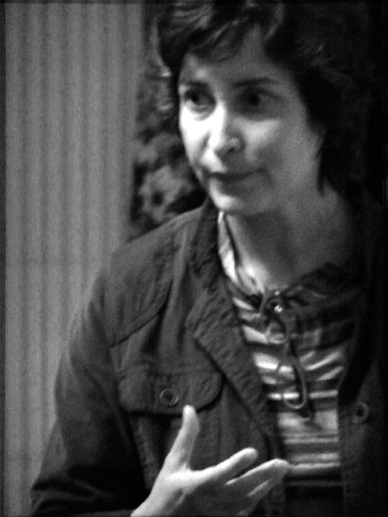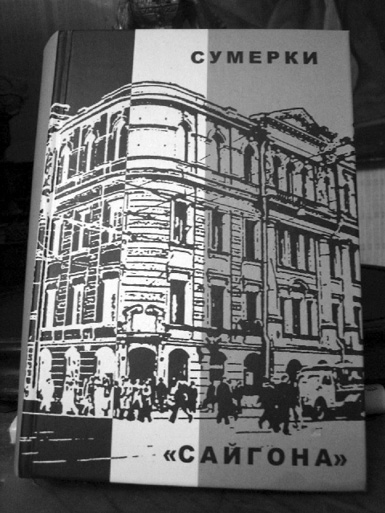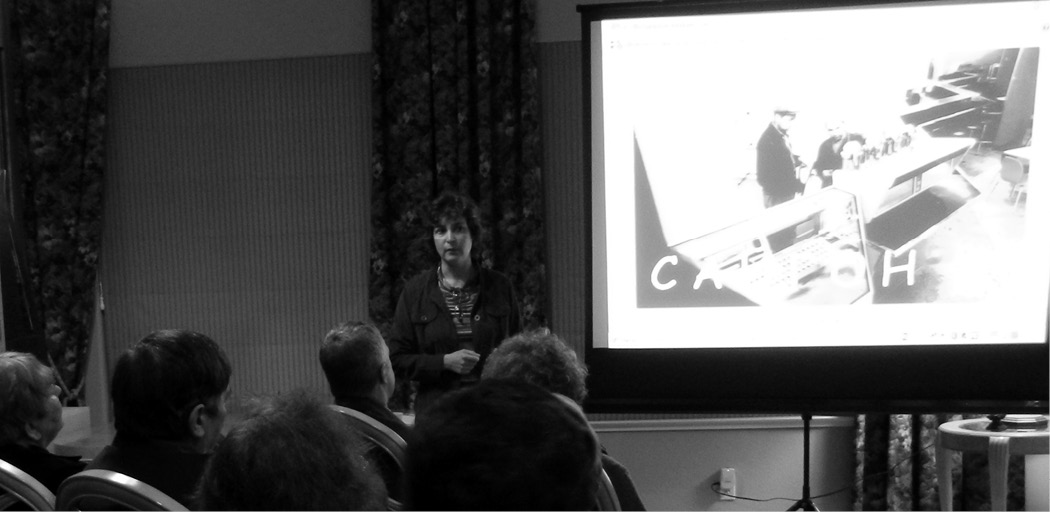Saigon in Twilight: Reflections on a talk by scholar Yulia Valieva
Published in: 21. Sniper
Yulia Valieva
Photo by Svetlana Fedoseeva
AB’s first acquaintance with Yulia Valieva’s book Twilight of “Saigon” came about in 2009 when Marina Unksova, our longtime author, invited us to look through her copy. The book was hard to part with… A year later, the cover still peeked out from the windows of Petersburg bookstores. Then, just recently, news arrived of Valieva, now the recipient of the Andrei Bely Prize for Twilight and other works, visiting California as part of Stanford University’s research programs, with plans to speak for “Terra Nova” club’s Russian audience on the side.
Among those present, as might be guessed, were people familiar with “Saigon” by more than hearsay. For many, this counts as sacred knowledge (“sacred” now in quotes, perhaps). Initiates clearly came equipped to tell of their involvement, experience and interpretations. The book’s author has grown used to this reciprocal flow. What Valieva offers is in a sense an “open text,” which encourages further contributions to explicating the truth of “Saigon.” For instance, one person in attendance spoke up to confirm the presentation’s third-cited, seemingly least likely variant of how the “Saigon” name appeared, connected with the atmosphere in the bar of the Hotel Continental as described in Graham Greene’s novel The Quiet American. This eyewitness is right, and others are, too. Different people find different versions persuasive, resonant with their world-view.
How can truth be reached among so many layers? Maybe by starting from the beginning. It could be like this. Young people with a surplus of ideas and feelings, yet with no place for sharing them, got in the habit of dropping by a particular cafe. The Americans were fighting then in Vietnam (its locus debauched Saigon), but the war here has already been won. The children of those who fought may walk the beaten tracks of peacetime and follow the set order of learning. But alongside the beaten tracks, youth made trails and forms of order for itself, working out its own relationship to reality. So a nondescript Leningrad cafe became “Saigon” and metamorphosed into an absolute for those wishing access to an alternative reality — perhaps the main one. It seems doubtful that any of the time’s guardians of culture and education would have agreed that the subject could warrant a whole thick book. Foreseeing as much might have required a gift of prophecy. Or, rather, it could have meant seriously considering that a cafe’s unofficial name might provide a definition for such a broad strata of people with vastly different fates, interests and points of relevance. But an image can be strong enough to overcome all outside it. Yes, the image of “Saigon” still retains those who seemingly offered themselves to it in sacrifice. Willingly or unwillingly, they gained “Saigon” at a cost of studies and employment, and often of their country, beyond whose borders they could start seeking another “Saigon.”

The windowsills of “Saigon” were well known to those who sat on them for hours each day. This connection outweighed many others. “Few people came there out of culinary interests,” Yulia Valieva notes. True, the legendarily strong coffee also played its key role. “You could also buy a light dry wine there, and with that, the company continued to talk. After that, there were different routes to take…” Indeed, routes differed and often included genuinely creative elements — although apparently this wasn’t emphasized as such. How much the coffee lovers merged with the walls, how much a soul becomes matter and matter soul, remains unknown. Each person decides where and to what degree his soul may find harbor, and which harbors may hold and shelter him in the future. Some fit entirely within “Saigon,” along with an entire biography, straight through travels to Siberia or correspondence with Heidegger.
The materials for Valieva’s research abound in gems. The world of those belonging to “Saigon” seems to have no less natural eloquence than the scene familiar to the Russian writers of the 19th century, when man also appeared superfluous and outmoded against the backdrop of technological progress and the laws of pragmatism. What did man live for? Writers, initially little lauded, had to seek an answer, turning for raw materials to potential heroes often overlooked by commonplace attentions. A new language needed finding, with new imagery drawn from contemporary life — a life evidently at least superficially distinct from what preceded it. The scene of Petersburg’s literary cafes, along with the streets surrounding them, served as a valid laboratory, and in a way simply as a finished work of art in its own right, sanctified by the labors of the souls engaged there. What have the souls of “Saigon” made? What have they attained? In part, it seems, an era. And the era’s byproducts, with no end of these yet in sight, although the physical “Saigon” is long gone.
Did the faithful patrons of “Saigon” leave with what they came for? Did they get what they wanted? If they got it, was it from “Saigon”? Perhaps accounts of this can be no more than personal. For many, it remains important to say, “Yes, I went there.” More urgent questions now belong to the private sphere. Although “Saigon” seems to have existed namely for discussing urgent questions. There’s now enough time and attention for less urgent ones. Details, trivia — they, too, shape the legend, shape literature, as in any reliable chronicle. Hungarian coffee makers, wall tiles with motifs of roosters… Fully appreciating all this requires the luminosity of inner innocence, intensifying sensitivity to the great within the small, the part within the whole. And a need to talk this over.
The name of Yulia Valieva’s book, Twilight of “Saigon” also suggests other considerations. What is twilight? On the one hand, the fading of light, parting, sadness. On the scale of life, its hour is prone to fear — what if the time never comes for telling one’s own story, tales of things done under the sun, with sun still overhead? What’s said of light by twilight, often hurriedly, may contain a trace of grey, opacity. But the word has its own power, and words written today of things long passed can be read as a tale of yesterday, or even tomorrow.
Still, for “Saigon,” there’s a sense that its life is not tomorrow’s. By now, its sequence of inner and outer associations appears overly fragmented and unlikely to respond to resuscitation. Or might this not be as it seems?
Certain ceremonial concepts relate twilight to the beginning of the next day. Teachers, students and newspaper staff also understand this: nightfall is the time to start preparing tomorrow’s lessons and circulations. More or less, this is how people came to “Saigon”: with the feeling that a day’s burden could no longer justify itself, that the joys of the public library were wearing thin, that it was time to yield to a different power, to different mental registers. Twilight is the time to start gathering new strength, to seek form and reinforcement in a way rarely available in the morning, before a new day.
The faces shown in the pages of Twilight of “Saigon” are astonishingly alive. Or maybe these are just normal faces. That’s likely what people thought at the time, although in any era there are marks of being chosen. It’s hard to judge based on photographs, and there’s really no need. What belongs to the past will stay in the past. Yet for some things, may twilight signal the day’s beginning. A wondrous algebra of identities suggests new solutions. New constellations await only a first star.


Speak Your Mind